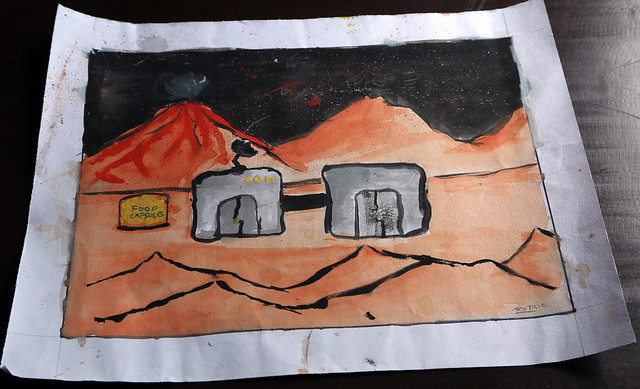A tale of two friends
Originally posted on OeWF.org
This tale is about two friends, X-ray and Sierra. X-ray, the dependable, reliable, ever-present workhorse and Sierra, the lean, excitable, new kid on the block. I had the privilege of meeting these two friends recently, and I can honestly say that I’m a better man for it.
Yes, I’m talking about the Austrian Space Forum’s (OeWF) Aouda spacesuit simulators. As part of the Analog Astronaut basic training program, I had the good fortune of experiencing what it’s like to engage with both X-ray and Sierra. Although they might seem the same to the casual onlooker, take a second to take a closer look. They both have unique characters and each convey their own special meaning to the lucky ones that get to don them.
We were put through our paces during the Analog Astronaut basic training program. The rigorous regimen was aimed at giving us a thorough grounding in all the basic skills required to successfully execute a Mars simulation mission. Specifically, the training program consisted of five blocks at OeWF Spacesuit Laboratory, spread over three months, in addition to plenty of homework. During the training program, we were exposed to a wide array of topics, including: geology, spaceflight mechanics, first aid, firefighting, team building, media training, physical exercise and so much more!

By Antric K Nayakam
All of this was geared towards preparing us for the reality of a Mars simulation mission. Not only are they exciting, rewarding and an important stepping stone towards one day realizing the goal of successfully landing a person on Mars, they are also incredibly challenging. Although all team members, including Analog Astronauts, remain firmly rooted to the ground during simulation missions, the challenges share a great deal of similarity with real space missions.
The most significant similarity for an Analog Astronaut stems from the unique feeling you get when the helmet of the Aouda spacesuit simulator closes. The first time I had the privilege of experiencing this was when I got to don Sierra. Nothing can really prepare you for the rush you feel when the helmet closes. With the buzz of ventilation system in the background drowning out voices, an integral part of an Analog Astronaut Personal Life Support System, you are left to rely on your radio to communicate with the outside world. As I replay that moment in my mind, I can recall the sensation of my feet lifting off the ground; that you’re truly somewhere else. You feel the weight of the suit, every curve of the Hard Upper Torso pressed against you, the warmth generated by your body heat. Understanding the human-machine interface is a vital part of ensuring that future Mars astronauts are given the best chance of succeeding. X-ray and Sierra both impart an indescribable feeling of oneness with the wearer.
As we look forward to the AMADEE-15 mission this summer, I can appreciate the wonderful opportunity I’ve been given to participate in a program of research that has already reaped so many rewards for future manned Mars mission planners. Having attempted to give you a sense of what it’s like to don an OeWF suit simulator, I must leave you with ode to X-ray and Sierra:
Silver, slick, sensational Source of life Reliable, dependable, ever-present Lean, excitable, wonderful Friends for life Making the impossible possible